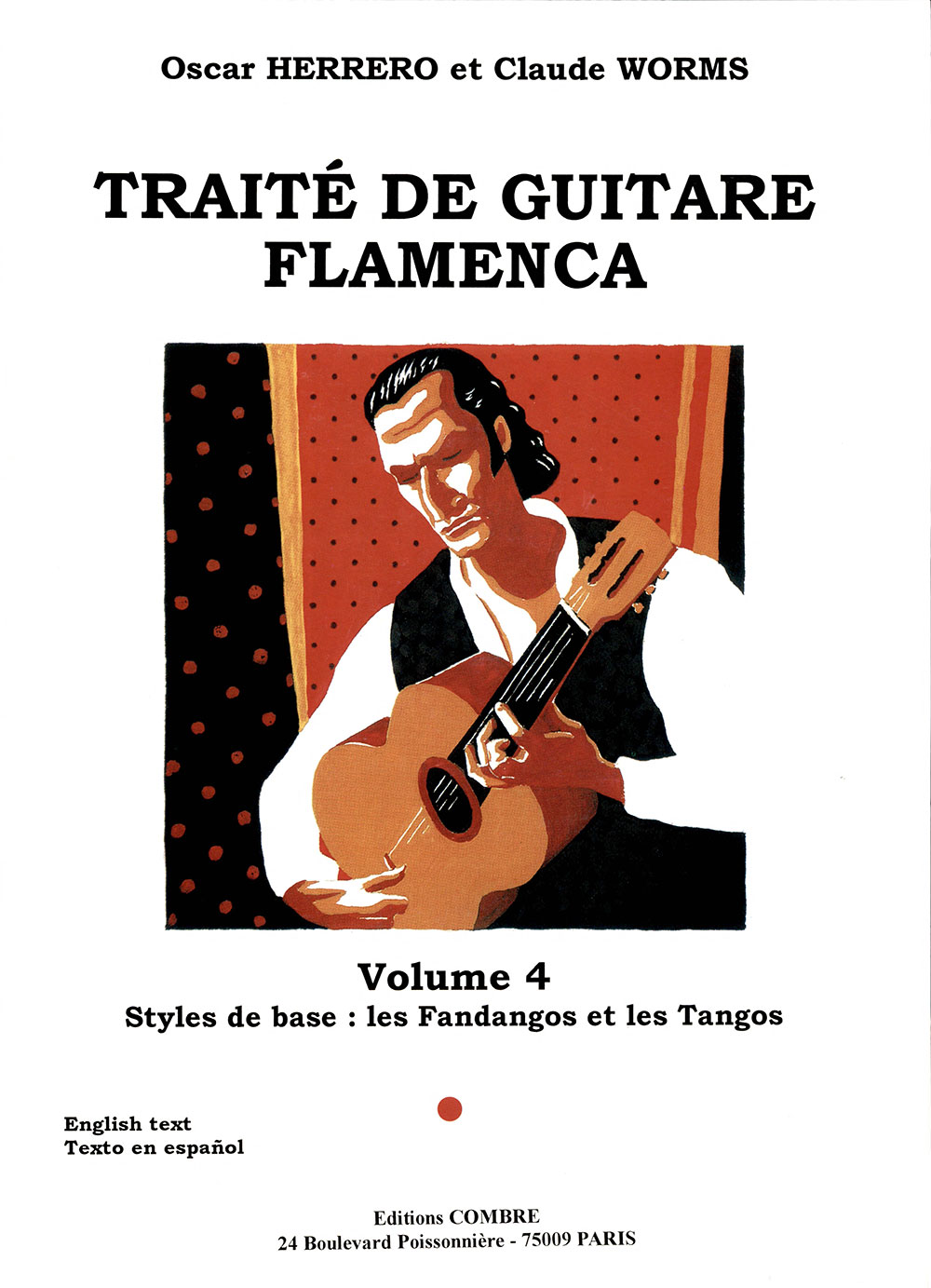Description
Method for initiation and advanced levels.
All scores are in Tablature and standard notation.
Languages: Spanish, English, and French.
It is accompanied by 80 audio tracks
This Volume 4 is fully dedicated to the Verdiales, Fandangos de Huelva, Fandangos Naturales, Tangos, Tanguillos and Tientos
Introduction
Section I : Los Verdiales
The typical harmonic cycle of the verdiales and fandangos in general
The rythmic compás of the verdiales
Falsetas: Ramón Montoya, Paco de Lucía, Gerardo Nñuñez
Sección II : Fandangos de Huelva and Fandangos “naturales”
Fandangos de Huelva
The harmonic cycle and rhytmic compás
Basic compás
Palmas exercises
Rhythm exercises in rasgueados
Cante acopaniment: the medio compás and the harmonic cycle of the compás
Fandango naturales
Cierres and remates
Structure and rhythm of the falsetas
Falsetas of the master tocaores
Ramón Montoya
Sabicas
8 Falsetas by Oscar Herrero
Sección III : Tanguillos, Tientos and Tangos
Tanguillos
Tangos
Falsetas
The difference today between Tientos and Tangos
Basic Rules
Beats and rhythmic accents
Position of the chords in the rhythmic compás
Palmas exercises
Compás with rasgueados
The structure of the falsetas
Placing of the falsetas in the compás framework
Remates
Falsetas “Cliché”
Falsetas in a fixed A7 position
Llamadas with a half-barré on the third fret
Llamadas over the Andalusian cadence
Falsetas en picado
8 Falsetas by Oscar Herrero
Sección IV: Flamenco metronome
Basic rhythm for Fandangos 160 bpm
Basic rhythm for Fandangos 120 bpm
Basic rhythm for Tango 160 bpm
Basic rhythm for Tango 130 bpm






Reviews
There are no reviews yet.